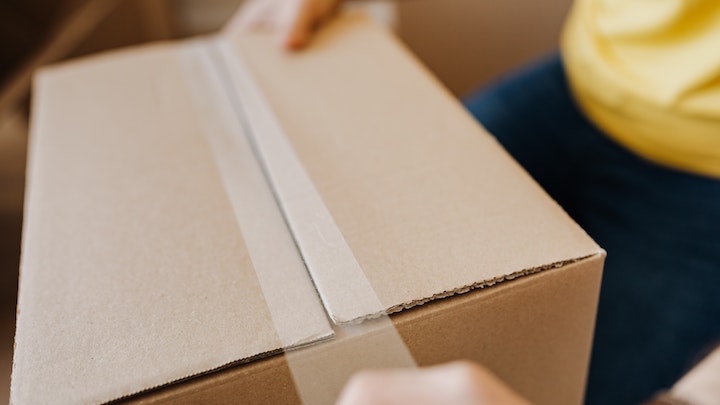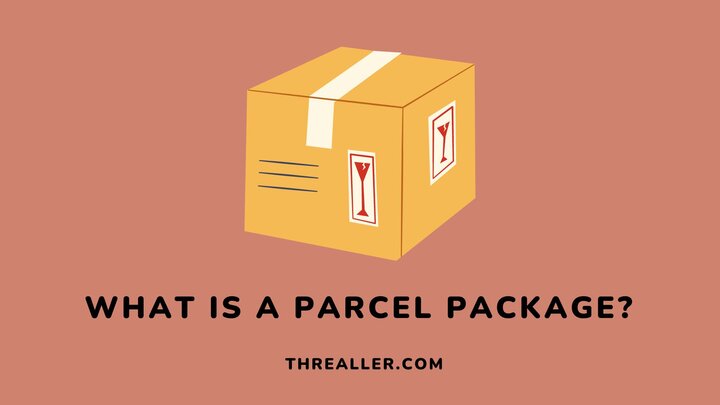If what you are mailing is not a letter or a postcard, there is a massive chance that you are about to mail a parcel. For context, a parcel package is an item wrapped in paper (usually brown) for mailing via post.
While both words (parcel and a package) are often used interchangeably, you should know that a parcel can always be referred to as a package, while a package can be a parcel or not. This is because they are not tied to postal service delivery only.
Now that you know what a parcel package means, let us look at how to prepare them and their standard delivery options.
What is a Parcel Package?
A parcel or a parcel package is an item that has to be shipped or mailed to a recipient. Theoretically, such a package is usually small and not too much for one person to handle.
Postal services offer various options for parcels and packages. For example, the USPS rate for First Class mail and Priority mail differs.
How to Prepare a Parcel Package

These are the crucial decisions, guidelines, and steps to follow when preparing a parcel:
1. Choose an appropriate container
Choosing an appropriate container for a parcel primarily depends on the parcel size and how much padding will be involved. Paper containers can work for small packages with little padding.
However, for big packages (with enormous padding), double-walled cardboard containers are more appropriate.
2. Follow parcel dimension guidelines
There are dimension standards to maintain for parcels. For example, commercial parcels should at least be 3 inches high, 6 inches long, 1/4 inch thick, and have a maximum weight of 70 pounds.
Machineable parcels, on the other hand, are easier to process and deliver. They should be at least 17 inches high, 27 inches long, and 17 inches thick, with a maximum weight of 25 pounds.
3. Arrange items smartly
To keep your parcel within dimension limits, it is essential to utilize spaces by cleverly placing the items in the container. Smart arrangement most times differentiates a small parcel from a medium one.
While warning labels like “fragile” or “handle with care” can influence how human couriers process your parcel, conveyor belts and automated machines have no preference.
Hence, proper packaging, stuffing, and padding are necessary to avoid damage.
4. Insert labels during packaging
Aside from labels indicating fragility, you also want to affix labels containing essential information like the delivery address, reference ID, and other details.
This information should be legible, with a copy placed inside the package and another sealed on the outside. In other words, there should always be a backup document.
5. Seal your package with a durable tape
After properly arranging the package and including the necessary paperwork, you must seal it with durable tape. At this stage, it is imperative to use weather-resistant tapes as packages get exposed to different conditions during transit.
After sealing, move the item around to ensure no component is loose or rattling around.
6. Check the weight and dimensions of the package
To check the weight of your package, you need a scale. For dimension, you need a micrometer or a measuring tape. Your findings will help you know what to prepare for regarding the cost of the courier.
Your courier will also inspect your package for weight and dimension. A matching result means no delays and faster processing.
Parcel Delivery Options
1. Conventional parcel delivery
Conventional parcel delivery is an option for heavy and standardized shipments. This delivery features a longer delivery turnaround and no weight restriction.
- Delivery usually exceeds 24 hours.
- Shipments can weigh between 30 kg to 3 tons.
- No restrictions to the size and number of parcels that can be shipped.
- Road transportation mainly.
2. Single parcel delivery
Single parcel delivery, like its name, only allows one parcel per shipment. Unlike the multiple-parcel system, invoicing (with this option) is per parcel, not per shipment.
This delivery option also makes it difficult for companies to process or sort shipments faster and offer attractive rates. Sorting per shipment allows this, which is why most companies prefer them.
- Delivery is usually between 24 to 48 hours
- The tracking process is similar to that of express delivery
- Shipment should have an average weight of less than 30 kg with standard dimensions.
- Road transportation mainly
3. Fast and express parcel delivery
Both fast and express parcel delivery are extra features that allow you to receive a package within 24 hours. Fast delivery ensures you get your parcel within 24 hours, while express delivery is faster.
You can get your package within 12 hours or more with express delivery. It is always a few hours faster than fast delivery.
- Delivery is usually within 24 hours or less
- Parcels typically weigh less than 30 kg with no dimension restrictions
- Access to life tracking until delivery is made
- Best for high-quality products, such as business mail, food, or pharmaceutical products.
- Multiple means of transportation.
FAQs
Can you collect a parcel for someone else?
Yes. You can provide an ID or any valid document belonging to the package’s owner.
Does a parcel have tracking?
Nowadays, you can track the progress of any parcel. You only need to download a tracking app or monitor your shipment on the company’s website.
Who delivers the parcel?
A courier is responsible for delivering essential parcels or packages.
Conclusion
A parcel or a parcel package is an item prepared for delivery via post. When preparing them, there are guidelines to follow. They include affixing appropriate labels, prior measurement, and proper sealing.
Once appropriate preparations are complete, and your parcel is at the post office, it will be in a locker until it is time for mailing or delivery. Depending on the prior agreement, you or the recipient may have to shoulder the delivery cost.
I hope you found this guide helpful. To better understand their importance in a postal office, please see my guide on the benefits of parcel lockers.
Thanks for reading.
